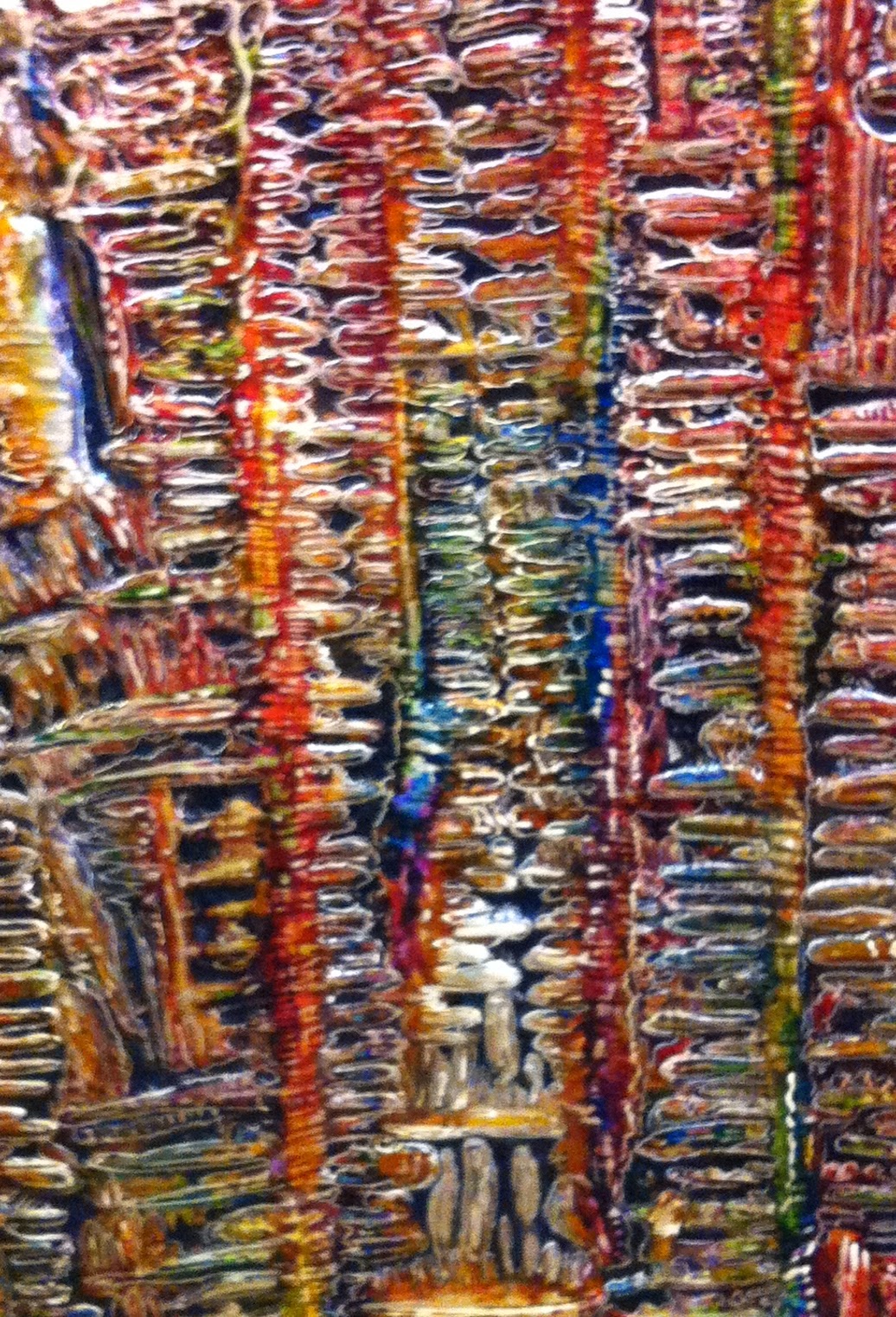 |
"Testosterone Crystal" — based on an electron microscope Image. First in a series of three: Testosterone, Adrenaline, Progesterone. Work in Progress by Kristen Sierra
|
Copper artist Kristen Sierra’s piece titled “Testosterone Crystal,” does exactly what she hoped it would do; it causes people to startle, stop, and ponder things unseen by the human eye. Like many artists, Sierra finds inspiration in nature, but sometimes at a microscopic level. Lately, she has been working from photographic images of structures and lifeforms so tiny it takes an electron microscope to see them. Sierra interprets these images through an ancient metalworking technique called repoussé, using tools to press against copper, thereby creating a design or image in relief. Exquisite and mesmerizing, Sierra’s works are rich with shimmering glints of the pinkish metal, jewel-like colors, and textures that invite touch. Her website is Amazon Red Art.
 |
| "Nautilus" — Current work by Kristen Sierra |
Sierra got up the nerve to contact him and sent a short email. She told him she was an artist, and said she would really enjoy talking to him about the images. They communicated back for forth for about a month before she ended up making and sending to him, a piece of her copper work based on something he liked. Since then, he has been licensing Sierra to do these images in copper.
 |
| "Three Ways of Telling Time" Current work by Kristen Sierra |
Brown: So, you have your copper. Then what?
I’ve already traced the major areas that I’m going to do relief on, so I flip that copper over and then press into the copper. I use often use clay as a surface under the piece if I have a large depression I’m going to be needing to do. In some cases I might use core board that has a give to it. In the old days they used things that were very messy—tar, and wax—and all that stuff sticks to the copper. Then you have to clean that off. I don’t want to mess with that so I kind of modified that.
 |
| Historical work by Kristen Sierra — "Here Comes the Sun" — Owner, M. Green |
 |
| "Sunny"— Current work by Kristen Sierra |
Brown: Is there a final finish?
Even as Kristen Sierra focuses on her larger body of work—the electron microscope images in particular—she continues to sell other pieces. You can find her as a regular vendor at the Redmond Saturday Market, in Redmond, WA. She will also be at an event called Kirkland Uncorked on the weekend of July 18-20, 2014.
All photos were provided by the artist and used with permission.
Contact information
 |
| A rotated close-up of "Testosterone Crystal" by Kristen Sierra in different lighting. |




1 comment:
Candace...your pictures are wonderful but I'd sure like to see these works in person. Thanks for sharing! Bill
Post a Comment